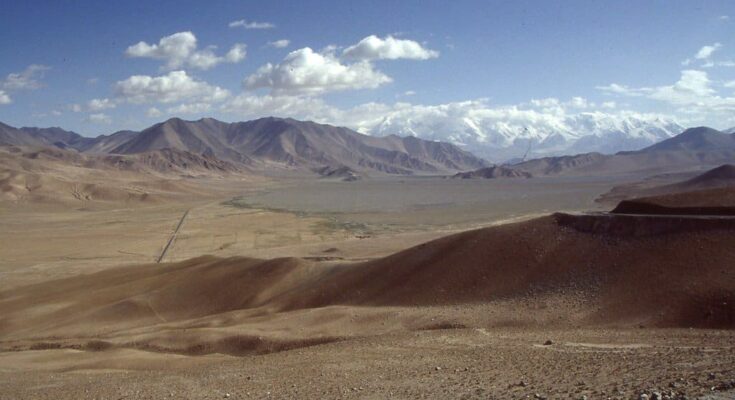
Researchers recently used drones with special light-sensing tools, known as lidar, to discover two ancient Silk Road cities in Uzbekistan’s mountains. This is the first time in Central Asia that such advanced drone technology has been used to study high-altitude archaeological sites.
Often used to map areas blocked by thick vegetation, lidar proved equally effective in capturing the rugged landscape of Uzbekistan’s mountains, providing a clear picture of these remote cities.
The research was led by Michael Frachetti, an archaeologist at Washington University in St. Louis, and Farhod Maksudov, director of Uzbekistan’s National Center of Archaeology.
Together with a team of experts, they used drones to map the layout and size of these cities, shedding new light on their role in ancient trade networks along the Silk Road. This historic trade route once connected Europe and East Asia, allowing for the movement of goods and ideas across continents.

Mapping the cities in detail
The drone scans revealed clear images of plazas, protective walls, roads, and living spaces from the sixth to the 11th centuries. These mountain cities, located 2,000 to 2,200 meters above sea level–similar in height to Machu Picchu–offer a rare look at thriving high-altitude settlements in Central Asia.
The smaller city, Tashbulak, covered about 12 hectares, while the larger city, Tugunbulak, spread across 120 hectares. Rather than simple rest stops, these cities served as important trade hubs, likely enriched by resources like animals, ores, and other valuable goods.
According to Maksudov, Tugunbulak’s design and culture differed greatly from the lowland societies of that era. “It’s clear that the people inhabiting Tugunbulak for more than a thousand years ago were nomadic pastoralists who maintained their own distinct, independent culture and political economy,” he explained.
High-resolution mapping through advanced technology
The team conducted 17 drone flights over three weeks to capture detailed scans down to the centimeter. These high-resolution images allowed researchers to create 3D models, revealing city layouts in ways that would have taken years to document by hand.
The researchers initially discovered these cities through predictive computer models and field surveys between 2011 and 2015. The additional time gave them the chance to use the latest in drone-based lidar technology.
The final phase involved comparing these 3D maps to similar ancient sites, revealing the true scale of Tugunbulak. Early excavations there show that one fortified structure, with walls three meters thick, may have been a factory where metalsmiths produced steel—a vital industry for the city’s economy.
These findings show that Tashbulak and Tugunbulak were not simply outposts but active players in the Silk Road trade. “The Silk Road wasn’t just about the endpoints of China and the West,” Frachetti said. “Major political forces were at play in Central Asia. The complex heart of the network was also a driver of innovation.”
Frachetti plans to use this approach to uncover more high-altitude settlements along the Silk Road, potentially reshaping our understanding of medieval urban development in Asia.



